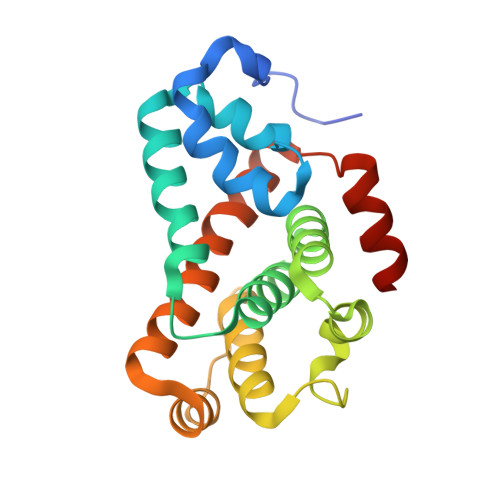Bacterial Tetrabromopyrrole Debrominase Shares a Reductive Dehalogenation Strategy with Human Thyroid Deiodinase.
Chekan, J.R., Lee, G.Y., El Gamal, A., Purdy, T.N., Houk, K.N., Moore, B.S.(2019) Biochemistry 58: 5329-5338
- PubMed: 31117392
- DOI: https://doi.org/10.1021/acs.biochem.9b00318
- Primary Citation of Related Structures:
6OHI, 6OHJ - PubMed Abstract:
Enzymatic dehalogenation is an important and well-studied biological process in both the detoxification and catabolism of small molecules, many of which are anthropogenic in origin. However, dedicated dehalogenation reactions that replace a halogen atom with a hydrogen are rare in the biosynthesis of natural products. In fact, the debrominase Bmp8 is the only known example. It catalyzes the reductive debromination of the coral settlement cue and the potential human toxin 2,3,4,5-tetrabromopyrrole as part of the biosynthesis of the antibiotic pentabromopseudilin. Using a combination of protein crystallography, mutagenesis, and computational modeling, we propose a catalytic mechanism for Bmp8 that is reminiscent of that catalyzed by human deiodinases in the maintenance of thyroid hormones. The identification of the key catalytic residues enabled us to recognize divergent functional homologues of Bmp8. Characterization of one of these homologues demonstrated its debromination activity even though it is found in a completely distinct genomic context. This observation suggests that additional enzymes outside those associated with the tetrabromopyrrole biosynthetic pathway may be able to alter the lifetime of this compound in the environment.
Organizational Affiliation:
Center for Marine Biotechnology and Biomedicine, Scripps Institution of Oceanography , University of California San Diego , La Jolla , California 92093 , United States.















